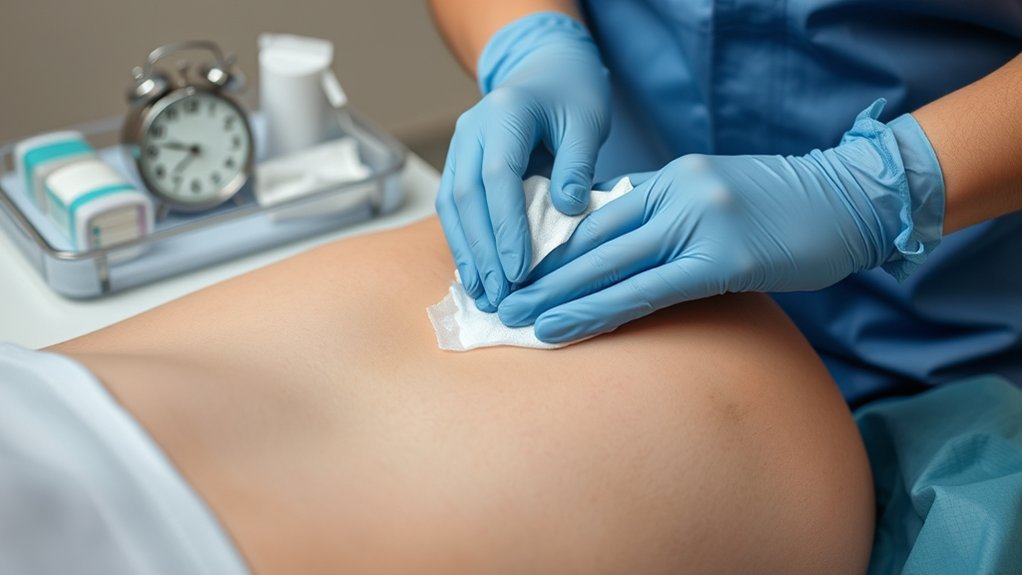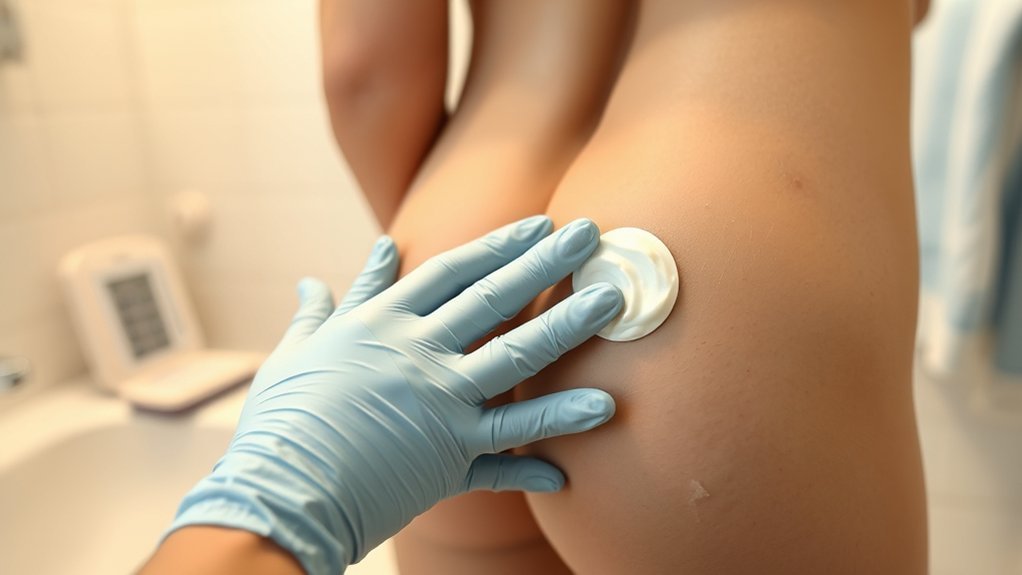Perineal care is important for your postpartum recovery, understanding the signs of complications is significant, and knowing when to call a doctor can make all the difference. It’s important to monitor your body and recognize what’s normal versus what requires medical attention. By staying informed, you can guarantee a smoother healing process. But what specific symptoms should you watch for, and how can you effectively manage your care? Let’s explore this further.
Understanding Perineal Care
Perineal care is a vital aspect of postpartum recovery that focuses on maintaining hygiene in your intimate areas.
After childbirth, it’s important to rinse the perineal area with warm water following bathroom use, then gently pat dry to minimize irritation. This practice not only promotes healing after a perineal tear but also helps prevent infections.
For your peri-care routine, avoid using tampons; instead, opt for sanitary pads until your clinician gives the green light.
Remember to drink plenty of water to aid your recovery.
Stay vigilant for signs of infection, such as increased pain, swelling, or unusual discharge from the perineal area.
Prioritizing perineal care will support your healing journey during this important time.
Signs of Complications to Watch For
After focusing on hygiene and recovery, it’s important to be aware of any signs that might indicate complications.
Watch for heavy vaginal bleeding, which means soaking more than one sanitary pad in an hour or passing large clots. If you develop a fever of 100.4°F (38°C) or higher, it could signal an infection, so seek immediate medical attention.
Be vigilant for heavy vaginal bleeding or a fever over 100.4°F; both may indicate complications needing urgent care.
New or worsening stomach pain may also indicate complications that require evaluation. Additionally, keep an eye out for signs of infection in the perineal area, such as increased pain, swelling, redness, warmth, pus, or foul-smelling discharge.
If you feel dizziness, lightheadedness, extreme fatigue, or weakness, don’t hesitate to contact your clinician for further guidance. Remember, understanding health conditions at different ages can help you recognize when to seek care.
When to Seek Medical Attention
When should you consider reaching out to your healthcare provider? If you notice heavy vaginal bleeding, like soaking more than one sanitary pad in an hour or passing large blood clots, it’s time to seek help.
Additionally, a fever of 100.4°F (38°C) or higher can be a sign of infection. Pay attention to the area around any tears; if you see increased redness, warmth, or pus, contact your clinician right away.
Persistent pain after the first few days, despite rest and care, is another reason to reach out.
Finally, if you have trouble passing urine or controlling bowel movements, don’t hesitate to notify your healthcare provider. Your well-being is important, especially after a cesarean section. Remember that preeclampsia is a life-threatening disorder that requires immediate medical attention if symptoms arise.
Strategies for Effective Perineal Care

To guarantee a smooth recovery, it’s essential to adopt effective strategies for perineal care. Start by using a peri bottle filled with warm water to cleanse the perineal area after using the bathroom, rinsing from front to back to prevent infection.
Apply postpartum cooling pads or cold compresses to reduce swelling and relieve pain. Remember to gently pat the area dry instead of wiping to minimize irritation. Incorporate sitz baths for added comfort, avoiding bubble bath products that may irritate your skin between the vagina.
Maintain hydration and consume high-fiber foods to facilitate regular bowel movements, and consider a stool softener to prevent constipation, which can exacerbate perineal discomfort. Additionally, be aware of the importance of maternal health as it plays a crucial role in your recovery process.
Finally, focus on emptying your bladder regularly for ideal care.
Resources for Support and Guidance
Effective perineal care is just one part of your recovery journey, and knowing where to find support can make all the difference.
Effective perineal care is crucial for recovery; seek support to enhance your journey.
Don’t hesitate to reach out to the Pregnancy, Birth and Baby helpline at 1800 882 436 for maternal child health advice. If you’re dealing with birth trauma, Birth Trauma Australia offers a safe space for sharing experiences.
For incontinence issues, the Continence Health Australia helpline at 1800 33 00 66 is there to help. Additionally, if you’re facing mental health challenges, call PANDA at 1300 726 306.
Make sure to lean on your loved ones during this time. When using cooling pads or focusing on pelvic floor exercises, remember to monitor blood flow and avoid any discomfort in your private areas. Breastfeeding support can also be a valuable resource as you navigate your recovery.
If serious concerns arise, don’t hesitate to report them.
Frequently Asked Questions
How Do I Know if My Perineal Tear Is Healing Correctly?
You’ll know your perineal tear is healing correctly if pain decreases, discharge changes color, and stitches dissolve within four weeks. Watch for signs of infection or heavy bleeding, and contact your clinician if you’re concerned.
What Are General Guidelines for Perineal Care?
“An ounce of prevention is worth a pound of cure.” Rinse your perineal area with warm water after bathroom use, gently pat dry, and use cold compresses for comfort. Monitor for infection signs and consult your doctor if needed.
When to Begin a Perineal Massage?
You should start perineal massage around 34-36 weeks of pregnancy. Doing it regularly, about 3-4 times a week, can help prepare your perineum for childbirth and potentially reduce the risk of tearing.
When to Get Perineal Stitches Checked?
You should get your perineal stitches checked if you notice unusual swelling, redness, or warmth, experience increasing pain, have foul-smelling discharge, or struggle with bowel control. Always reach out to your healthcare provider with concerns.
Conclusion
In the grand adventure of postpartum recovery, you’re the captain of your ship—navigating the tumultuous waters of perineal care. Remember, if you notice heavy bleeding or a fever, it’s not just a minor inconvenience; it’s a signal to call the doctor, not your mother-in-law. So, keep your eye on the warning flags and don’t hesitate to seek help. After all, it’s better to be safe than sorry, especially when it comes to your well-being!
